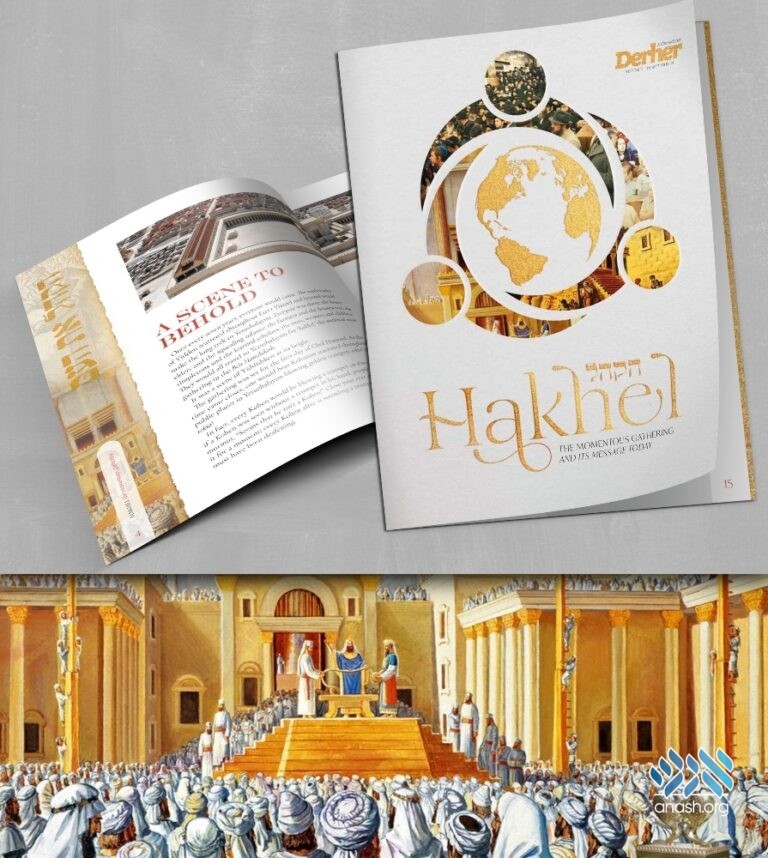Chabad communities around the world can now order free copies of the new special edition of the Derher magazine, exploring the meaning and message of Hakhel.
It was a scene of Yiddishkeit at its height.
The gathering was set for the first day of Chol Hamoed. As the time came closer, one would hear Kohanim stationed throughout the public places in Yerushalayim blowing golden trumpets tekia! terua! tekia!
Close your eyes and picture it for a moment: every Kohen alive is sounding a trumpet; the sound must have been deafening.
These blasts were the signal for everyone to start making their way towards the Beis Hamikdash.
It was a sight of holy pandemonium. Millions of men, women, and children swarmed into the Beis Hamikdash and gathered around a large wooden podium in the azara from which the king was to speak. Miraculously the entire Jewish nation fit inside. The deafening sounds and crushing crowds overwhelmed the senses.
Finally, the time arrived. The king climbed onto the podium.
Under the gaze of the entire Jewish nation, the hakhel ceremony commenced. The king made the bracha on the Torah like at a regular krias hatorah, opened the Torah to parshas Devarim and read various parshiyos where Hashem exhorts the Yidden to keep true to His mitzvos. At the conclusion of the reading, he recited seven special brachos unique to this ceremony.
It was a stirring call for renewed dedication to Hashem and His mitzvos. All Yidden participated in the hakhel ceremony, no matter their station in life; whether they were great scholars or complete ignoramuses lacking a basic understanding of Yiddishkeit, for its inspirational message was felt equally by all.
Every single person in the Jewish nation was present at hakhel, and the effects were felt for years afterward.
But what about today, when there is no Beis Hamikdash?
The Rebbe famously called on each and every one of us to recreate the Hakhel experience by gathering together Jews in our vicinity and inspiring them with Torah and yiras shomayim.
Who should arrange these gatherings?
When should they be held?
What should we speak about?
Can children do this too?
All of this and more is explored in a special Hakhel supplementary edition of the Chassidisher Derher, coming to thousands of subscribers across the globe along with the Tishrei magazine.
In order to assist our readers with an appreciation for Mivtza Hakhel and how to heed the Rebbe’s call in this regard, in addition to our subscribers, A Chassidisher Derher is offering copies of this special edition free of charge to Chabad communities around the world.
You can request copies of this special edition for your community at Derher.org/Hakhel

Discussion
In keeping in line with the Rabbonim's policies for websites, we do not allow comments. However, our Rabbonim have approved of including input on articles of substance (Torah, history, memories etc.)
We appreciate your feedback. If you have any additional information to contribute to this article, it will be added below.